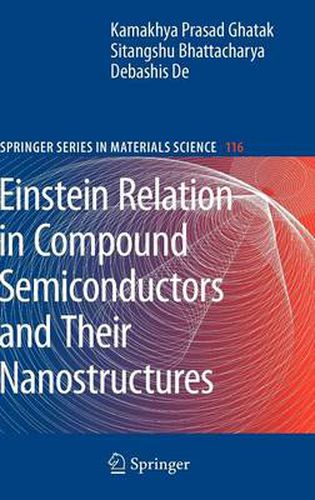Readings Newsletter
Become a Readings Member to make your shopping experience even easier.
Sign in or sign up for free!
You’re not far away from qualifying for FREE standard shipping within Australia
You’ve qualified for FREE standard shipping within Australia
The cart is loading…






This title is printed to order. This book may have been self-published. If so, we cannot guarantee the quality of the content. In the main most books will have gone through the editing process however some may not. We therefore suggest that you be aware of this before ordering this book. If in doubt check either the author or publisher’s details as we are unable to accept any returns unless they are faulty. Please contact us if you have any questions.
In recent years, with the advent of ?ne line lithographical methods, molecular beam epitaxy, organometallic vapour phase epitaxy and other experimental techniques, low dimensional structures having quantum con?nement in one, two and three dimensions (such as inversion layers, ultrathin ?lms, nipi’s, quantum well superlattices, quantum wires, quantum wire superlattices, and quantum dots together with quantum con?ned structures aided by various other ?elds) have attracted much attention, not only for their potential in uncovering new phenomena in nanoscience, but also for their interesting applications in the realm of quantum e?ect devices. In ultrathin ?lms, due to the reduction of symmetry in the wave-vector space, the motion of the carriers in the direction normal to the ?lm becomes quantized leading to the quantum size e?ect. Such systems ?nd extensive applications in quantum well lasers, ?eld e?ect transistors, high speed digital networks and also in other low dimensional systems. In quantum wires, the carriers are quantized in two transverse directions and only one-dimensional motion of the carriers is allowed. The transport properties of charge carriers in quantum wires, which may be studied by utilizing the similarities with optical and microwave waveguides, are currently being investigated. Knowledge regarding these quantized structures may be gained from original research contributions in scienti?c journals, proceedings of international conferences and various - view articles.
$9.00 standard shipping within Australia
FREE standard shipping within Australia for orders over $100.00
Express & International shipping calculated at checkout
This title is printed to order. This book may have been self-published. If so, we cannot guarantee the quality of the content. In the main most books will have gone through the editing process however some may not. We therefore suggest that you be aware of this before ordering this book. If in doubt check either the author or publisher’s details as we are unable to accept any returns unless they are faulty. Please contact us if you have any questions.
In recent years, with the advent of ?ne line lithographical methods, molecular beam epitaxy, organometallic vapour phase epitaxy and other experimental techniques, low dimensional structures having quantum con?nement in one, two and three dimensions (such as inversion layers, ultrathin ?lms, nipi’s, quantum well superlattices, quantum wires, quantum wire superlattices, and quantum dots together with quantum con?ned structures aided by various other ?elds) have attracted much attention, not only for their potential in uncovering new phenomena in nanoscience, but also for their interesting applications in the realm of quantum e?ect devices. In ultrathin ?lms, due to the reduction of symmetry in the wave-vector space, the motion of the carriers in the direction normal to the ?lm becomes quantized leading to the quantum size e?ect. Such systems ?nd extensive applications in quantum well lasers, ?eld e?ect transistors, high speed digital networks and also in other low dimensional systems. In quantum wires, the carriers are quantized in two transverse directions and only one-dimensional motion of the carriers is allowed. The transport properties of charge carriers in quantum wires, which may be studied by utilizing the similarities with optical and microwave waveguides, are currently being investigated. Knowledge regarding these quantized structures may be gained from original research contributions in scienti?c journals, proceedings of international conferences and various - view articles.